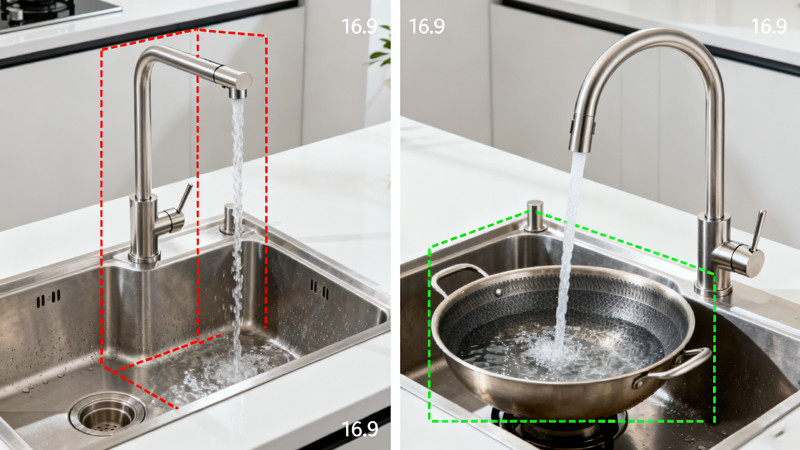
Turning on the tap only to see brown, yellow, or cloudy water flowing out can be both alarming and frustrating. Clean, clear water is something we often take for granted—until it changes color. If you’ve noticed discolored water coming from your faucet, don’t panic. While it may look unpleasant, not all discoloration is dangerous. However, it’s a sign that something’s off and should be addressed quickly.
In this post, we’ll break down the common causes of discolored faucet water, what the colors typically mean, how to fix it, and when it’s time to call in a professional.
Common Causes of Discolored Water
Discolored water can come from a variety of sources, and the color can provide clues to the underlying problem. Here are the most common reasons why faucet water might appear off-color:
1. Rust and Sediment in Pipes
Over time, older galvanized steel or iron plumbing can begin to corrode. Rust particles flake off and mix with the water, creating a brown, reddish, or yellow hue. This is especially common in older homes with aging pipes.
If the discoloration is only coming from one faucet, the issue may be with the pipes connected to that fixture. If all faucets are affected, the problem may lie in your home’s main supply line—or even the municipal water supply.
2. Municipal Maintenance or Construction
Sometimes, the city or town will perform maintenance or repairs on nearby water mains, which can stir up sediment in the water supply. This often causes temporary discoloration that clears up after running your taps for a few minutes.
Your city might issue a warning or advisory in advance of this kind of maintenance, so if your water suddenly turns brown or yellow, it’s worth checking local notices.
3. Water Heater Corrosion
If you notice the water is discolored only when running hot, the problem could be your water heater. Sediment can build up in the tank, especially if it’s not flushed regularly. In more serious cases, the inside of the tank may be rusting.
Try running only cold water—if it’s clear, your hot water heater may need cleaning or replacement.
4. Organic Material or Algae
If your water comes from a well or other non-municipal source, organic materials like algae or decaying leaves could be to blame. This can produce green, brown, or even black water. In these cases, disinfection and filtration may be needed to prevent health risks.
5. Manganese or Iron in the Water
Naturally occurring minerals like manganese or iron can also discolor water. These are more common in well systems but can sometimes show up in municipal water, too. High levels of manganese, for example, can give water a black or purple tinge, while iron can produce reddish-brown staining.
What the Color of Your Water Might Mean
Understanding what each color suggests can help narrow down the root cause:
- Brown/Red/Yellow: Often caused by rust or iron sediment in pipes, water heaters, or municipal work.
- Green/Blue: May indicate corrosion in copper plumbing or algae in the water supply.
- Black: Can result from manganese or deteriorating rubber washers and hoses.
- Cloudy or White: Usually harmless and caused by air bubbles that clear up after a few seconds.
How to Fix Discolored Faucet Water
1. Flush the System
Run cold water for several minutes to see if the discoloration clears. Use a faucet at the lowest point in your home (like a basement utility sink) to help flush sediment from your system.
2. Check If It’s Hot or Cold Water
Determine if the problem only affects hot water. If so, flushing or servicing your water heater could solve the issue.
3. Inspect Faucet Aerators
Unscrew the faucet’s aerator (the screen at the tip of the spout) and clean it. Sometimes sediment or corrosion collects here, causing discolored or reduced water flow.
4. Call Your Water Provider
If the issue started suddenly and affects the entire house, contact your city’s water department. They may be conducting maintenance or could alert you to a water advisory in your area.
5. Water Testing
Use a home test kit or hire a professional to test for iron, manganese, lead, or bacteria—especially if you’re on a private well. These results can guide your next steps, like filtration or pipe replacement.
When to Call a Plumber
You should consider calling a professional plumber if:
- The discoloration lasts longer than 24–48 hours.
- Only one or a few faucets are affected.
- You see flakes of rust or black particles.
- Your water smells bad or tastes metallic.
- Your home has old galvanized or lead pipes.
A plumber can inspect your system, identify the problem’s source, and help determine whether you need new pipes, a water heater flush, or other repairs.
Preventing Future Problems
To reduce the chance of water discoloration:
- Flush your water heater annually to remove sediment buildup.
- Replace aging plumbing, especially galvanized steel or lead pipes.
- Install a whole-house water filter, especially if you rely on well water.
- Schedule annual plumbing inspections to catch corrosion early.
Final Thoughts
Discolored faucet water can be unsettling, but it’s not always dangerous. Often, it’s caused by rust, sediment, or harmless minerals. However, persistent discoloration or certain colors—like green or black—can signal deeper issues that need attention.
Knowing what causes discolored water, what steps to take, and when to call in a pro can help protect your plumbing system—and your peace of mind.
Have questions about your faucet or water quality? Drop them in the comments or reach out to a licensed plumber in your area. Clean water is essential—don’t settle for less.
 WOWOW Faucets
WOWOW Faucets







